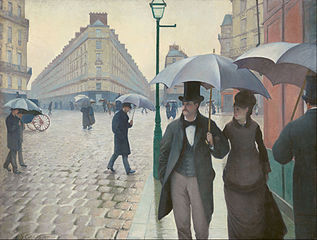

  |
|
Using online tools to manage the source you find during your research makes it easier to keep track of what you have found. You can annotate PDFs, make notes, and even automatically generate footnotes and bibliographies.
The Library recommends using EndNote to manage your sources. Click here for our EndNote Guide.
Drawing inspiration from the work of others is an integral part of practice in the visual arts. However, it is important to clearly show what is and what is not your work.
The following video produced by CityU provides a great introduction to the fundamental principles.
As an ethical scholar and practitioner, it is essential that you properly acknowledge the sources that you use in your work - both textual and visual. The most common citation format used in the arts and humanities is Chicago Style. This section provides basic format guidelines and examples on how to cite information using the Notes and Bibliography system.
If you want to learn more, such as the Author-date system, please consult the Chicago Manual of Style directly (16th edition, call number 686.224 Un3M 2010).
You can also visit The Chicago Manual of Style Online.
Citing References in Your Paper maintained by The University of Wisconsin-Madison Writing Center offers additional examples of citations for your reference.
1. Proper Caption Format for Written Work and Presentations:
Artist's first and last name, title of work of art (italicized), materials, measurements in cm, institution which houses the work, city, and image source.
Artist Name, Title. Date, Materials, Dimensions. Collection, City. Image Source.
Include the source where the image came from preceded by a statement which declares the source (for example “In:” or “Source: “ or “Available from:”) and accessed date for online images.
Artist Name, Title. Date, Materials, Dimensions. Collection, City. Image Source.
Examples:
Fig. 3. Caravaggio, The Denial of Saint Peter. Early 15th century, Oil on canvas, 94 x 125.4 cm. The Metropolitan Museum of Art, New York. From: The Metropolitan Museum of Art, http://www.metmuseum.org (accessed September 29, 2009).
Figure 6: Gordon Bennett, Abstraction (Native). 2013, Acrylic on linen, 183 x 152.3 cm. Museum of Contemporary Art Australia, Sydney. From: Tate Modern, http://www.tate.org.uk/art/five-things-know-gordon-bennett (accessed September 28, 2017).
2. Citing an Image in Label Format:
Artist Name
Title, Date
Materials
Dimensions
(collection and city if applicable)
Object label caption format example:
Gordon Bennett
Abstraction (Native), 2013
Acrylic on Linen
183 x 152.3 cm
Museum of Contemporary Art Australia, Sydney
Source: Tate Modern, http://www.tate.org.uk/art/five-things-know-gordon-bennett (accessed September 28, 2017).
Footnotes
Culture refers to the practices, tastes, and values associated ith particular social classes.1
3. Christine M. E. Guth, "Japan 1868-1945: Art, Architecture, and National Identity," Art Journal 55, no. 3 (1996): 17.
Reference to a book chapter, Forward, Preface, etc.
4. Norwald Torrington, "Following the Path to the Left," in Whither Tomorrow? ed. Montgomery Abelson, 11-12 (Tulsa: Wizmer Bros., 1994).
Reference to magazines and newspapers
5. Jane Smith, "Folk Tales of Acadia," Halifax Herald, 26 July 1949, sec. A, p. 4.
Reference to a website
6. Susan Merritt, "Dr. Maude Abbott," Women From Canada's Past, accessed Sept, 20, 2012, http://www.niagara.com/~merrwill/default.html.
Reference to a journal article online (with DOI (Digital Object Identifier))
7. William J. Novak, "The Myth of the "Weak" American State," American Historical Review 113 (June 2008): 758, doi:10.1086/ahr.113.3.752.
Reference to a blog entry
8. Mike Nizza, "Go Ahead, Annoy Away, an Australian Court Says," The Lede (blog), New York Times, July 15, 2008, http://thelede.blogs.nytimes.com/2008/07/15/.
Reference to a YouTube video
9. Carol Ventura, Tapestry Crochet "Spiral" Basket, accessed Sept. 23, 2012, http://iweb.tntech.edu/cventura/basket.html.
Bibliography
Bibliography
Books with single author or editor
Franklin, John Hope. George Washington Williams: A Biography. Chicago: University of Chicago Press,
1985.
Books with multiple authors
Ward, Geoffrey C., and Ken Burns. The War: An Intimate History, 1941-1945. New York: Knopf, 2007.
Journal article
Jackson, Richard. "Running Down the Up-Escalator: Regional Inequality in Papua New Guinea." Australian
Geographer 14 (May 1979): 175-84.
Website
Merritt, Susan. "Dr. Maude Abbott." Women from Canada's Past. accessed 5 Sept. 2014.
http://www.niagara.com/~merrwill/default.html.
Citing an Image
Images can be cited using captions or in a bibliography. It is not common practice to cite images in a bibliography unless requested by your professor.
Captions
Bibliography
Reference to an image from an online database
You can use the Cite feature in the database to generate citation, but it is your responsibility to review the citations for consistency, accuracy, and completeness.

Figure 1.
Gustave Caillebotte, Paris Street: Rainy Weather, oil on canvas, 2.06×2.97 m, 1877 (Chicago, IL, Art Institute of Chicago); photo credit: Erich Lessing/Art Resource, NY." Grove Art Online. Oxford Art Online. Oxford University Press, accessed September 8, 2014, http://www.oxfordartonline.com/subscriber/article/img/grove/art/F016108.
Reference to an image without copyright restrictions (such as Creative Commons)
You may attribute an image source for presentations, papers that do not require specific publication style.
Figure 2.
Davide D'Amico, Trafalgar Square, September 14, 2014, https://www.flickr.com/photos/davidedamico.
|
Library Home |
Opening Hours |
Contact Information |
Location Map |
Privacy Policy |
Site Map |
Intranet |
| Copyright © 2010-2019. Hong Kong Baptist University Library. All rights reserved. |